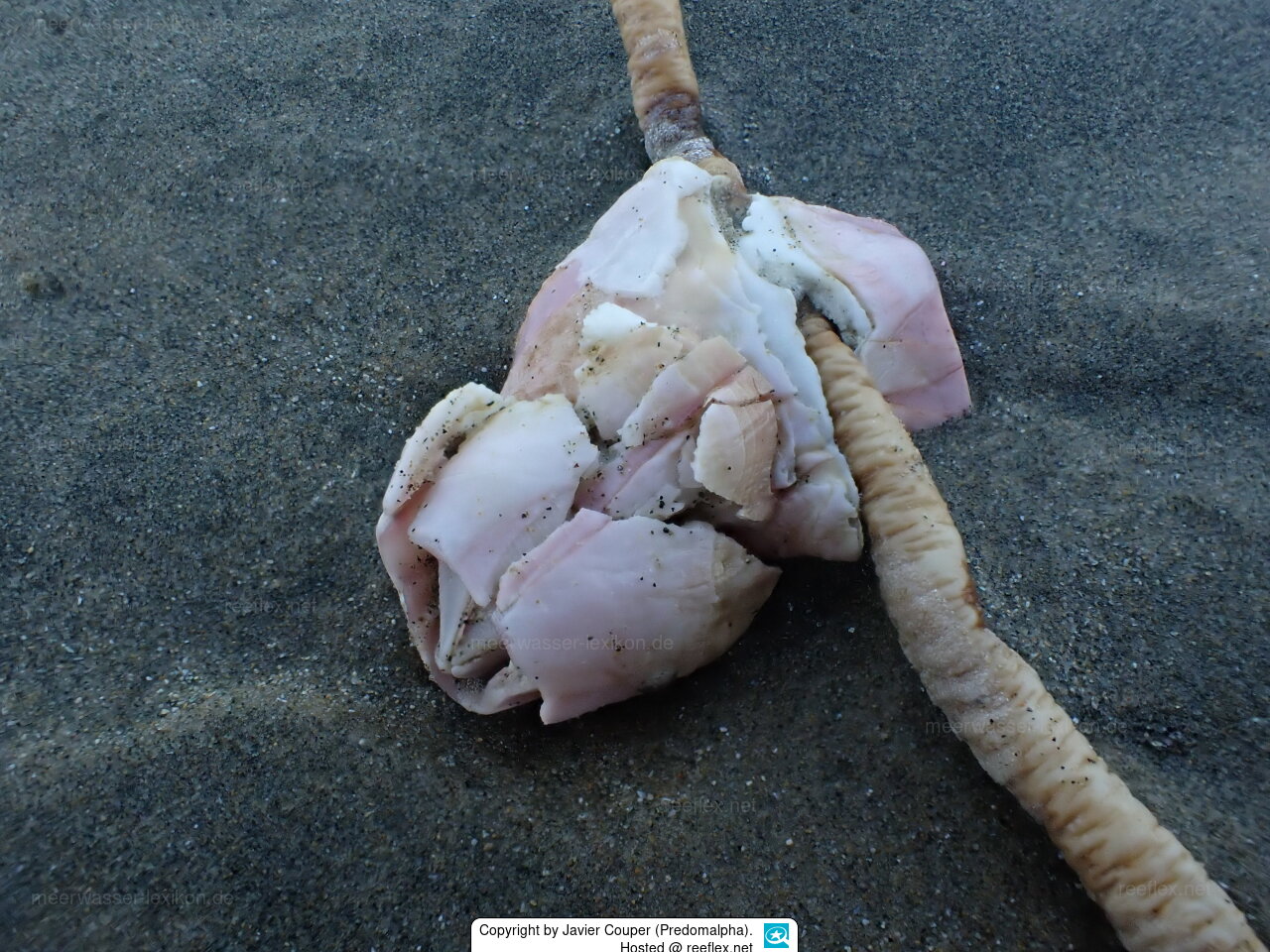Info
Notomegabalanus decorus (Darwin, 1854)
Barnacles are not bivalves, but belong to the crustaceans, more precisely to the barnacles (Cirripedia).
The pink-coloured barnacle (Notomegabalanus decorus) is only known from the waters around New Zealand.
Notomegabalanus decorus is a common species that occurs from the upper intertidal zone in sheltered bays to deeper waters on the New Zealand shelf.
It is found throughout New Zealand from the Kermadec Islands to the sub-Antarctic islands, including Macquarie Island.
It is a large, tubular barnacle with six fan-shaped plates (parietes), its shell is without obvious ribbing or furrowing, and in young specimens it is also quite smooth.
The mouth is broad, roughly diamond-shaped and toothed, the base is calcified and porous.
In living specimens, the colour of the tissue lining the valves is pink.
The six lateral flaps are pale pink in colour, the radii are darker pink.
The pink barnacle is particularly common on the oyster beds of the Strait of Foveaux at a depth of around 25 metres.
They stick their heads to the rocks and build a shell around themselves.
Diet: They use their hairy "legs" to filter the seawater for plankton.
Synonymised names
Balanus decorus Darwin, 1854 · unaccepted
Megabalanus decorus (Darwin, 1854) · unaccepted (generic re-assignment)
Direct children (2)
Subspecies Notomegabalanus decorus argyllensis Buckeridge, 1983
Subspecies Notomegabalanus decorus ronarchensis Carriol, 1992
Barnacles are not bivalves, but belong to the crustaceans, more precisely to the barnacles (Cirripedia).
The pink-coloured barnacle (Notomegabalanus decorus) is only known from the waters around New Zealand.
Notomegabalanus decorus is a common species that occurs from the upper intertidal zone in sheltered bays to deeper waters on the New Zealand shelf.
It is found throughout New Zealand from the Kermadec Islands to the sub-Antarctic islands, including Macquarie Island.
It is a large, tubular barnacle with six fan-shaped plates (parietes), its shell is without obvious ribbing or furrowing, and in young specimens it is also quite smooth.
The mouth is broad, roughly diamond-shaped and toothed, the base is calcified and porous.
In living specimens, the colour of the tissue lining the valves is pink.
The six lateral flaps are pale pink in colour, the radii are darker pink.
The pink barnacle is particularly common on the oyster beds of the Strait of Foveaux at a depth of around 25 metres.
They stick their heads to the rocks and build a shell around themselves.
Diet: They use their hairy "legs" to filter the seawater for plankton.
Synonymised names
Balanus decorus Darwin, 1854 · unaccepted
Megabalanus decorus (Darwin, 1854) · unaccepted (generic re-assignment)
Direct children (2)
Subspecies Notomegabalanus decorus argyllensis Buckeridge, 1983
Subspecies Notomegabalanus decorus ronarchensis Carriol, 1992







 Javier Couper (Predomalpha), New Zealand
Javier Couper (Predomalpha), New Zealand


